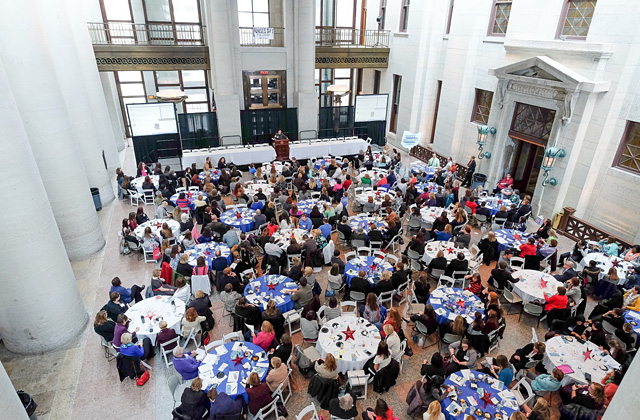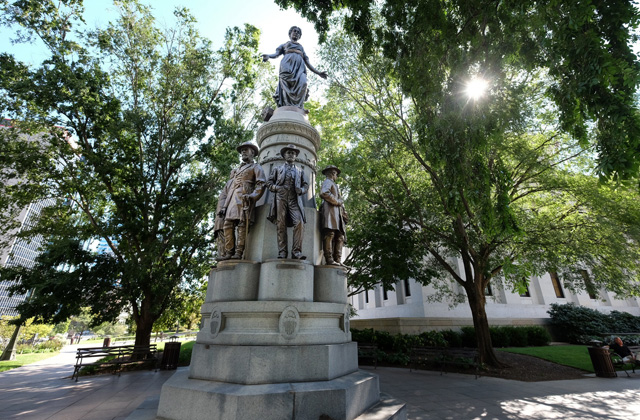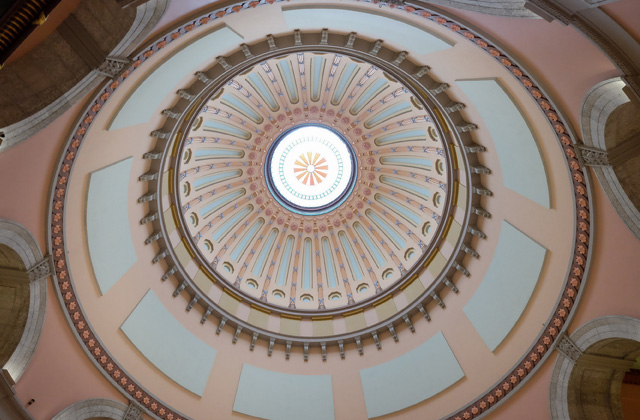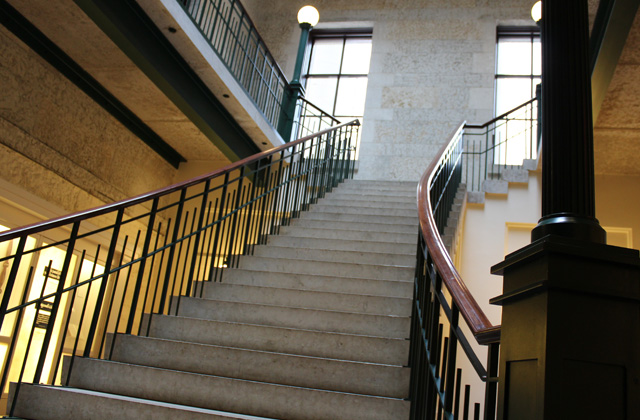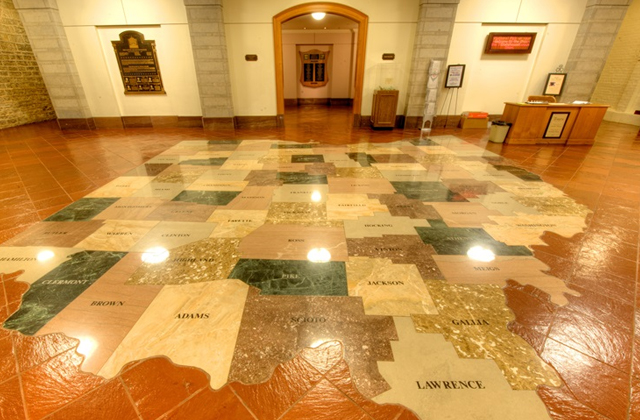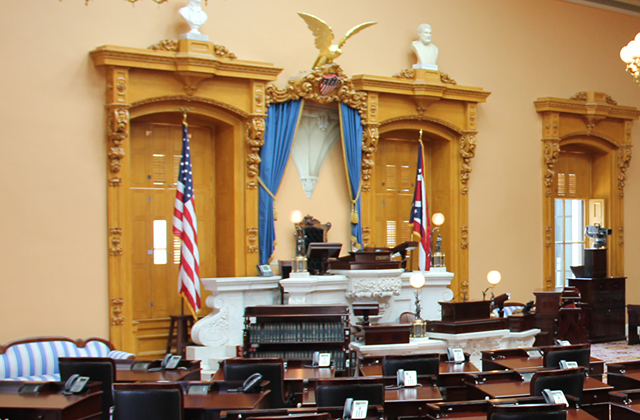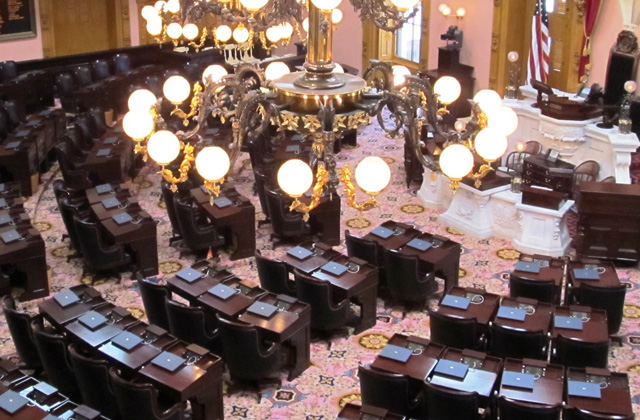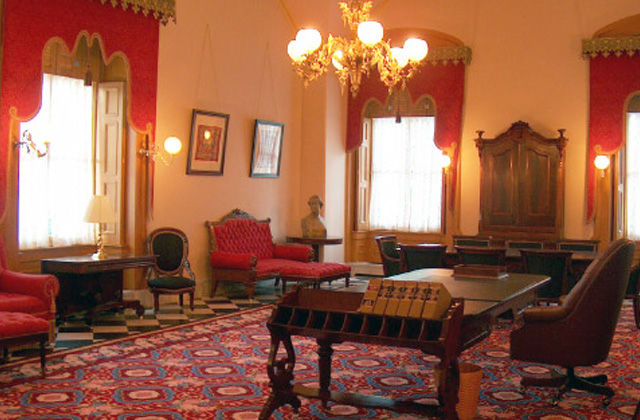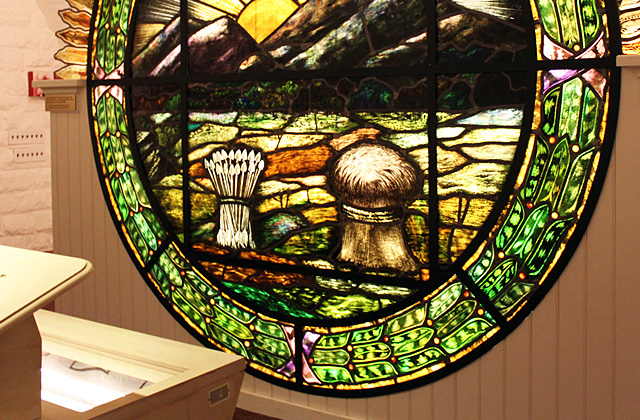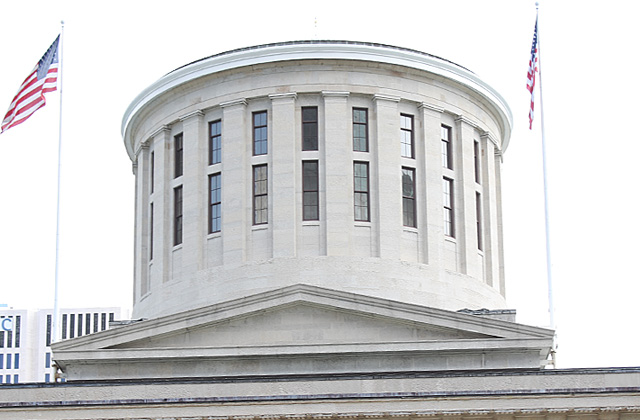


House Chamber
The House Chamber is approximately the same size as the Senate Chamber and accommodates Ohio's 99 elected state representatives. The Chamber  was largely designed by Nathan B. Kelley, one of the original Statehouse architects.
was largely designed by Nathan B. Kelley, one of the original Statehouse architects.
Viewing Gallery
Kelley included two ornate side balconies in his design. Because the balconies were supported with cantilever brackets rather than columns, the Statehouse commissioners had to be convinced that the brackets were capable of supporting the weight of guests viewing the proceedings. To prove they were sound, Kelley hung 4,000 pounds of pig iron from each of the brackets. The balconies were able to hold the weight and were approved.
Balcony
A third balcony was added at the rear of the House Chamber 30 years later in 1891. This balcony, referred to as the Ladies' Gallery, is rumored to have been built to accommodate women who wished to view session. It was said at the time that women could not handle the rigors of debate. By 1995, however, a woman, Jo Ann Davidson, was serving as the first female Speaker of the Ohio House of Representatives and was addressing the gallery, filled with both men and women, almost daily. The gallery, although not original, was preserved due to its significant seating capacity.
Speaker's Lectern & House Floor
The marble Speaker's dais is original and was carved on site. It was carved from a massive piece of marble, which had been placed in the room before all of the walls and ceilings were constructed. The gray pedestal on the wall behind the dais is an example of trompe l'oeil painting, French for "fool the eye." It appears three-dimensional, but is in fact only a two-dimensional painting. The chair is commonly referred to as the "Lincoln Chair," although it was not even constructed until 1878, well after Lincoln's death. The name is likely derived from Lincoln's 1861 address to a joint session of the Legislature in the House Chamber on February 13, 1861. There were so many guests that the House Rules were temporarily suspended, and women were permitted onto the floor of the House for the first time.
The representatives' desks rest on a raised platform, which was added at the turn of the twentieth century. This platform now provides representatives with disabilities easier access to the floor and creates space for computer, telephone and microphone wiring.
Original House Chamber
The representatives' desks are reproductions of the original desks and have been modified with microphones, telephones and computers. Most of the woodwork in this room is original, including the windows and doorframes. As with most of the wood in the Statehouse, pine and poplar has been used and grained to look like oak. A sample of the original graining technique was discovered only by finding one of the original shutters behind a faux window along the north wall of the House Chamber.
The colors used in the Statehouse today also match the originals. Extensive paint research determined the colors actually used in the late 1800s. Layer by layer, paint was removed until the original colors were exposed. Some of the original colors are French blue, straw yellow and salmon. The color scheme in the House Chamber is the same as it appeared in 1861 and features approximately 25 different colors of paint.
The skylights in the House Chamber ceiling have been re-opened. The bronze chandeliers are reproductions based on period sketches, with the center chandelier weighing 1,200 pounds and reaching 12' in diameter.
 Holiday Festival and Tree Lighting 2025
Holiday Festival and Tree Lighting 2025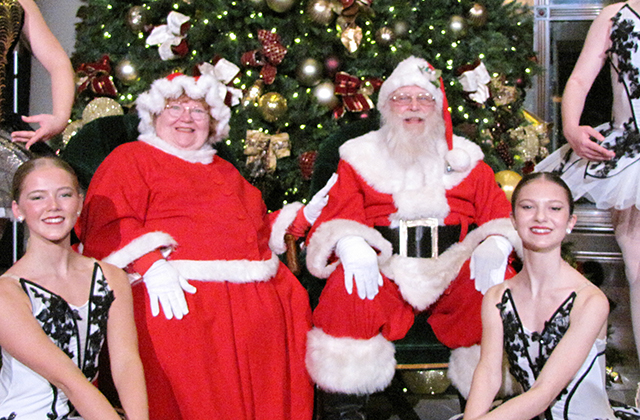 Holiday Santa Photos 2025
Holiday Santa Photos 2025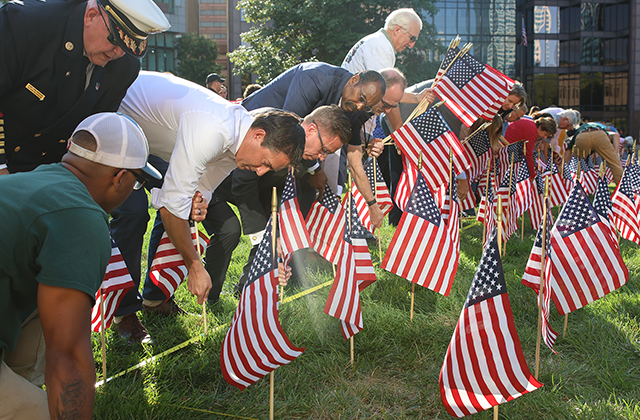 Flags for 9-11 in 2025
Flags for 9-11 in 2025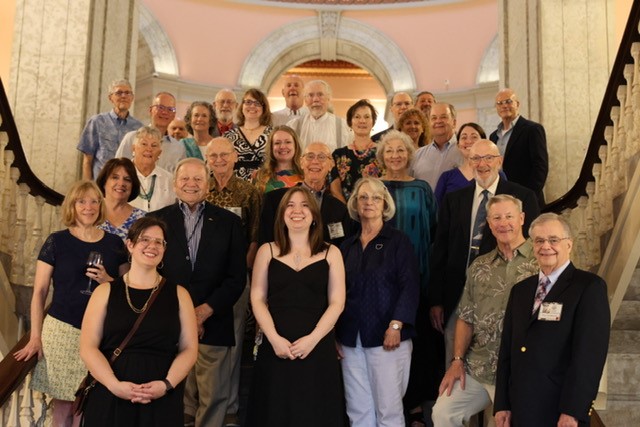 2025 Volunteer Appreciation Dinner
2025 Volunteer Appreciation Dinner America 250-Ohio
America 250-Ohio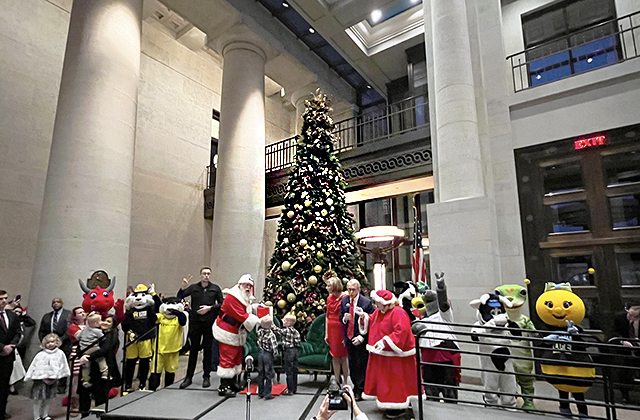 Holiday Festival and Tree Lighting 2024
Holiday Festival and Tree Lighting 2024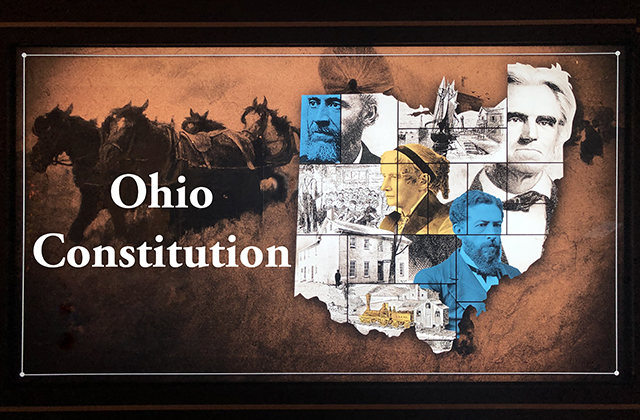 Ohio Constitution Videos
Ohio Constitution Videos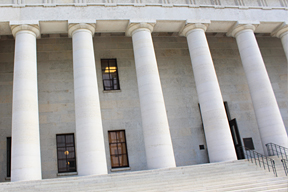 Ohio Statehouse Videos
Ohio Statehouse Videos








